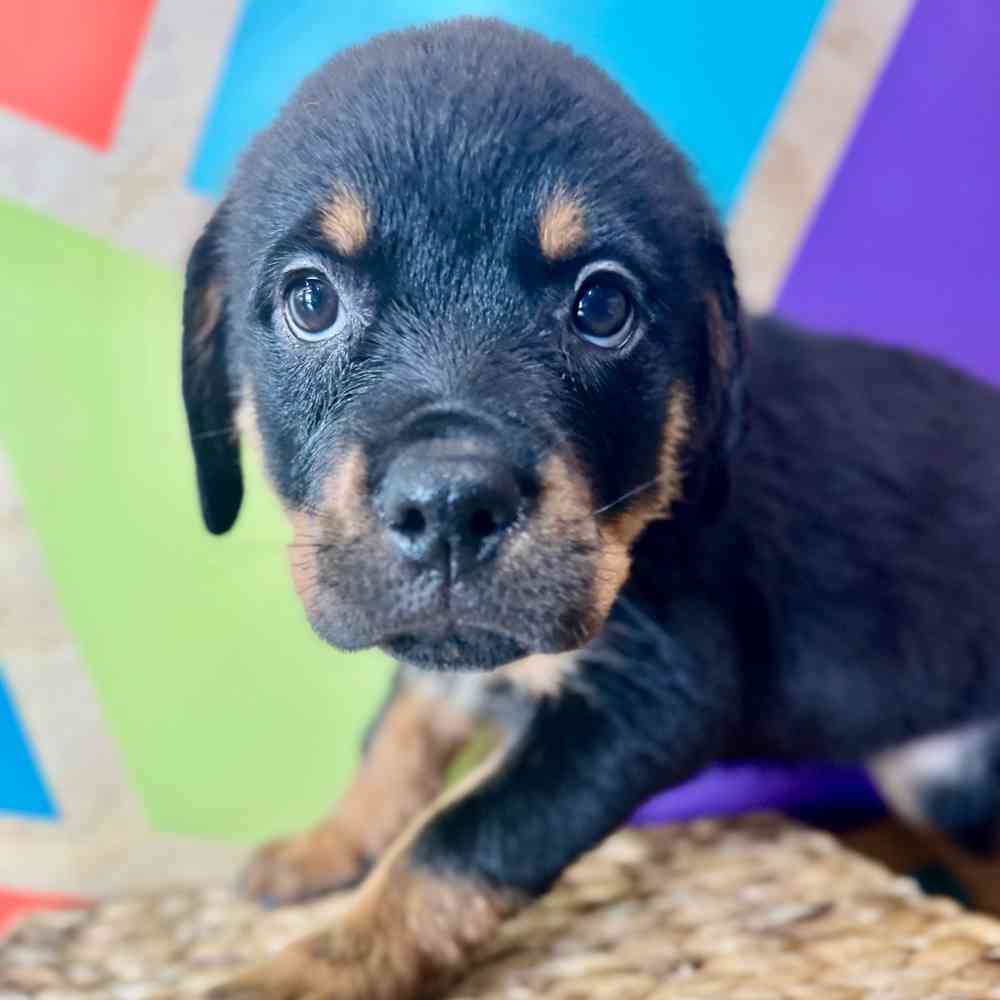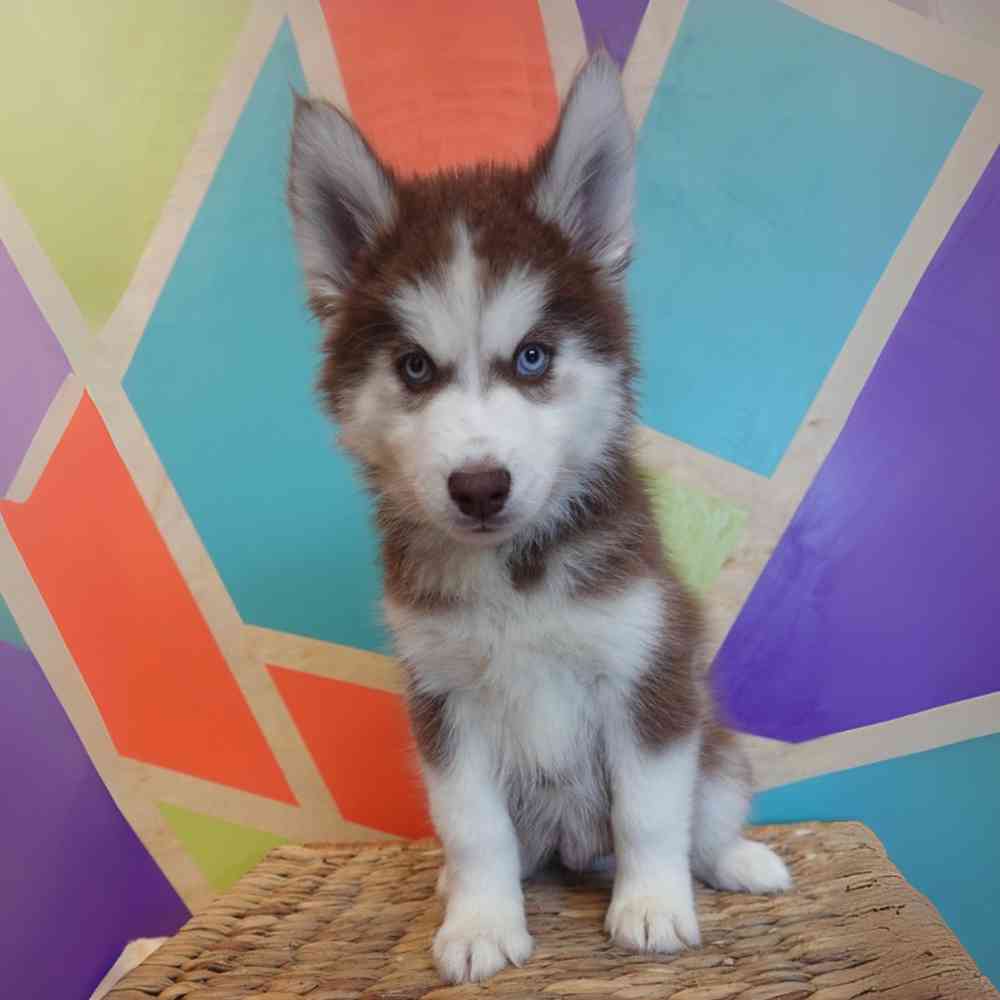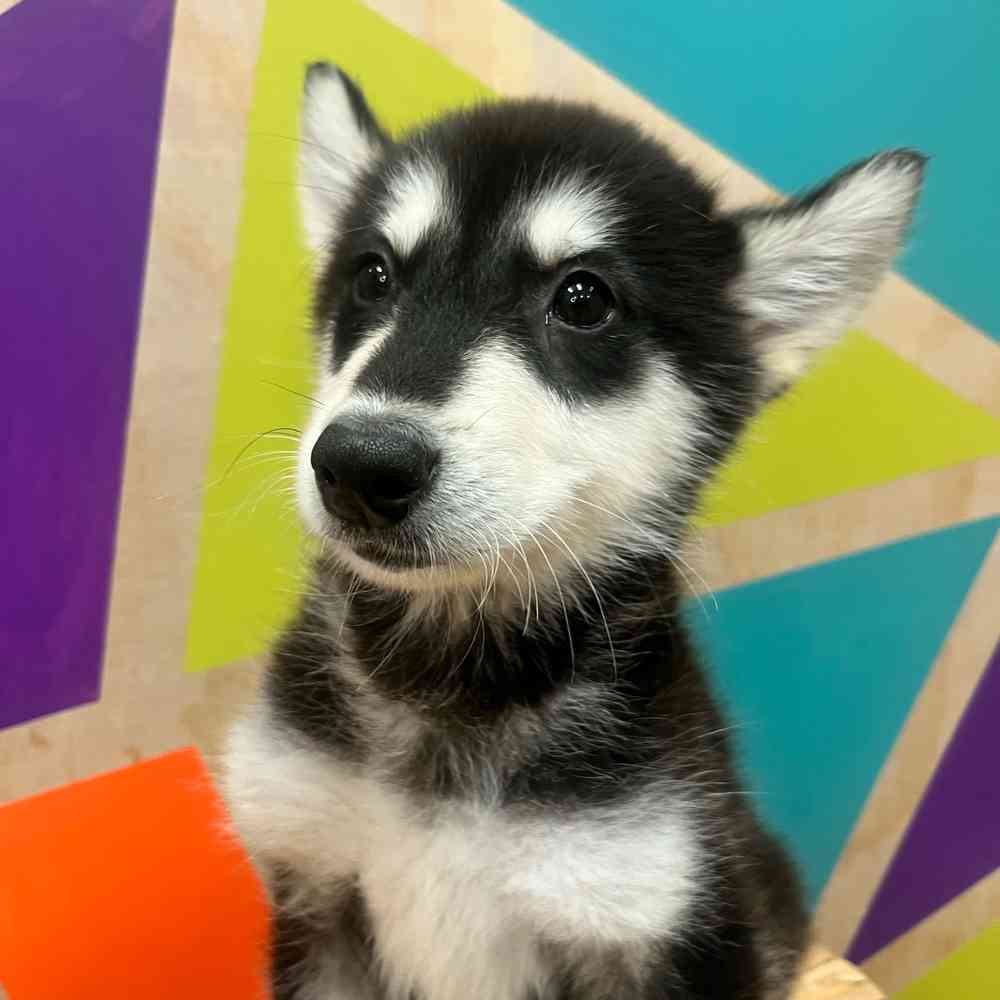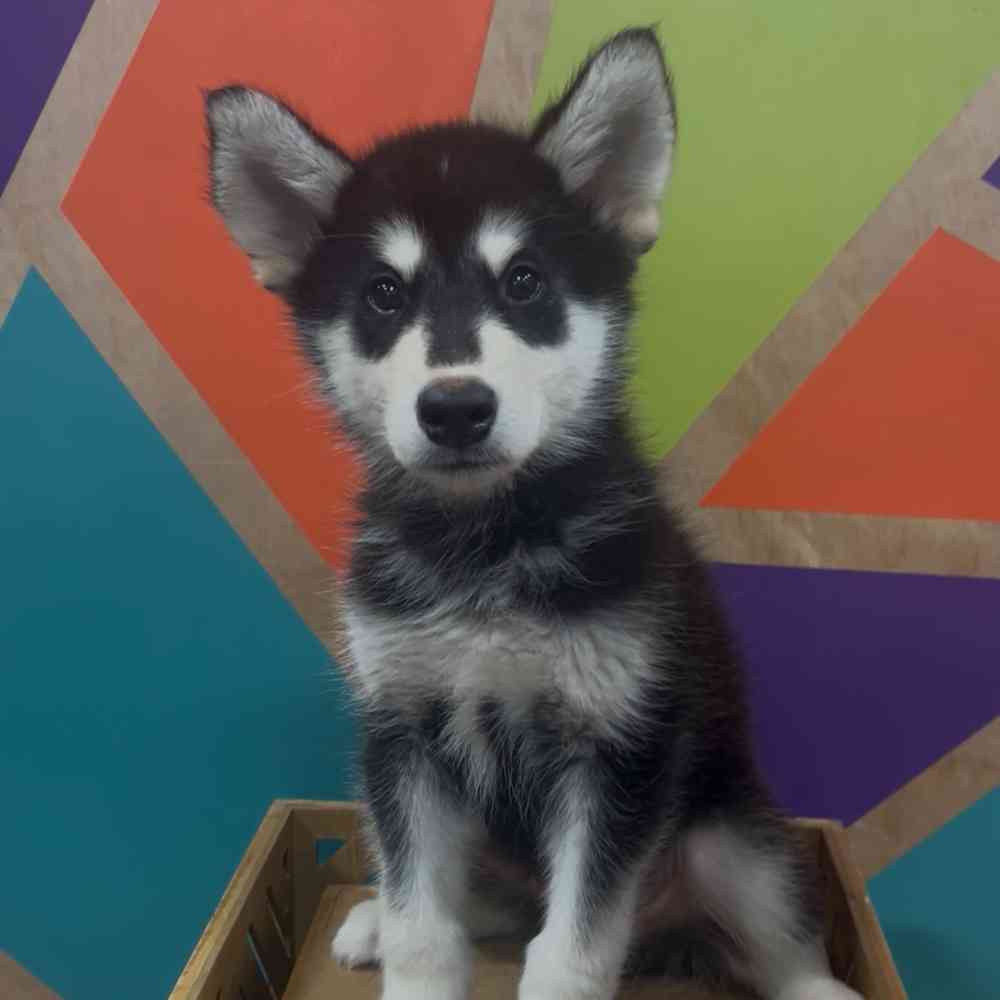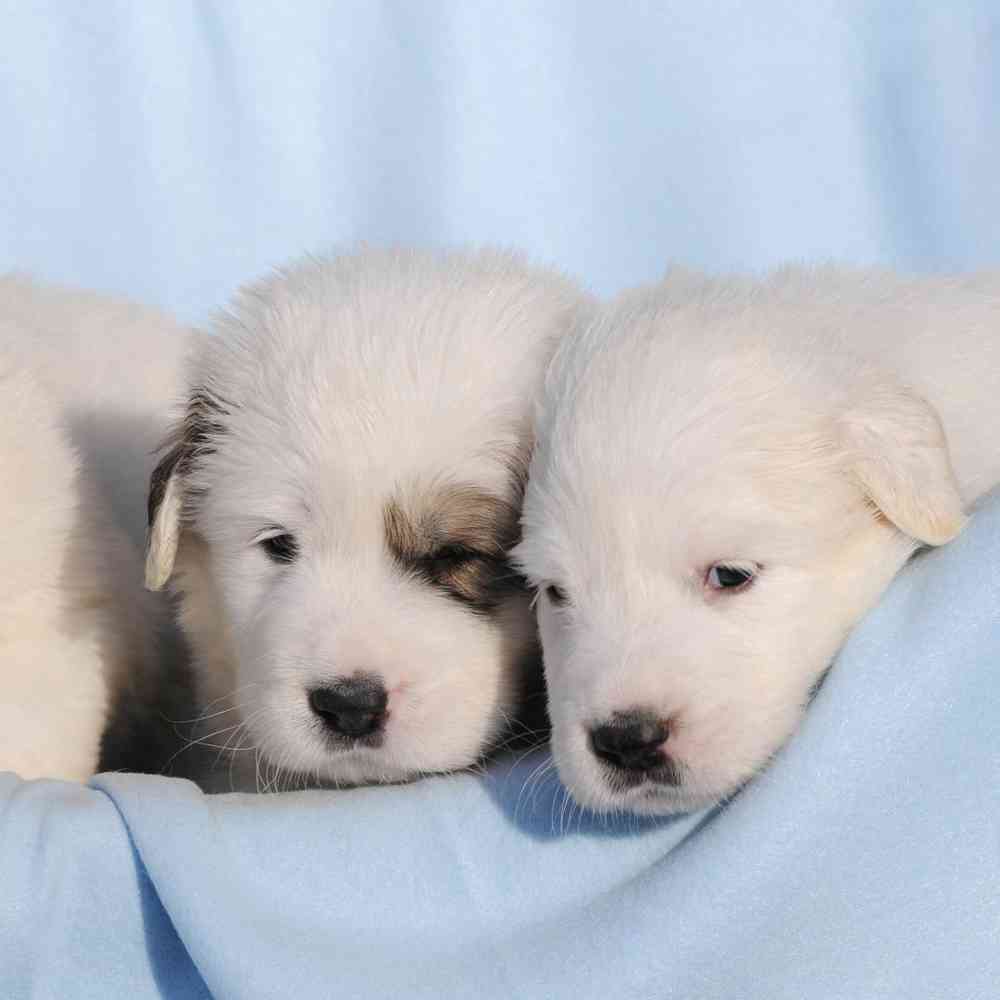
AKC Registrable
Great Pyrenees
The Great Pyrenees is a large, thickly coated, and immensely powerful working dog bred to deter sheep-stealing wolves and other predators on snowy mountaintops. Pyrs today are mellow companions and vigilant guardians of home and family.
Available Puppies
Breed Info
Clubs, Registries & Associations
American Canine Association Continental Kennel Club Universal Kennel Club International American Kennel Club United All Breed Registry America's Pet Registry, Inc. United Kennel Club (Based on breed recognition. See store for details on this particular puppy.)
Group
Working
Heritage
The Great Pyrenees is a member of the Mastiff family and is thought to have originated in Siberia or Central Asia, eventually transported to the Pyrenees mountain regions of France where they worked as guard dogs for livestock. Remaining in the mountains until the Middle Ages, this breed became popular with French aristocracy. A multitalented working breed, the Great Pyrenees works as a winter pack dog, avalanche rescue dog, sled and cart dog, guard dog and a wonderful companion dog.
Description
Large, 25-32” at the shoulders, weighing anywhere from 85-100 pounds. The Great Pyrenees has a massive and muscular body with double coat in colors of solid white, white with tan, gray, pale yellow or red-brown. The weather-resistant outer coat is long, thick and coarse; the under coat is fine, yet wooly and thick.
Health Awareness
The Great Pyrenees has a life expectancy of 10 years and is prone to bone cancer, patellar luxation, hip dysplasia, skin conditions, epilepsy and bloat.
Personality
The Great Pyrenees is incredibly brave, devoted, loyal, gentle and affectionate to his family, but wary of strangers or anything/anyone unfamiliar. This breed needs a lot of socialization because they are natural guard dogs with strong territorial instincts, and that territory encompasses anything they can see and hear – not just your property boundaries. They tend to wander away from you and not return in need to patrol the safety of their territory. They are highly independent with the innate ability to recognize friend from foe. They need to know where you are at all times so they can protect you. Because of their natural watchdog instincts, they are also barkers to alert you that something seems amiss to them, even in the middle of the night. Start training good manners with your Great Pyrenees when he or she is a young puppy. Because of their natural independence, training can take longer with this breed. You need to be a calm, patient, knowledgeable, and humane owner giving consistent and committed leadership to your Great Pyrenees using only motivational training methods. And remember this is a really big and tall breed, so be sure to keep your counters and tables clear until your Great Pyrenees is trained not to counter-surf.
Exercise/Energy Level
The Great Pyrenees needs plenty of daily exercise including long, brisk daily walks, and off-leash playing. A fence is a must for this breed because they tend to escape to patrol their territory, which is anything they can see or hear, not necessarily your property boundaries. This breed does best in cooler climates, so be sure to get your veterinarian’s approval before exercising this breed in hot weather. Boredom and inadequate mental stimulation can cause this breed to develop other behavior issues, such as destruction.
Additional Information
Grooming Requirements: Requires regular brushing; bathe only when necessary. Pay special attention during the yearly heavy shedding. You might consider shaving the coat during the summer months, but be cautious of sunburn. Talk with your veterinarian to get a recommendation on a sun protection product for your Great Pyrenees. Coat: Long, thick and dense Shedding: Average shedding all year with once-yearly heavy shedding Hypoallergenic: No, due to shedding Apartment Living: Not good for apartment living because this breed needs space more than they are active indoors. Lap Dog: No Good With Children: Good with all children when well socialized at an early age. Good With Other Pets: Generally good with other pets when well socialized at an early age. Can be aggressive toward same-sex dogs.
Breed Standard
General Appearance
The Great Pyrenees dog conveys the distinct impression of elegance and unsurpassed beauty combined with great overall size and majesty. He has a white or principally white coat that may contain markings of badger, gray, or varying shades of tan. He possesses a keen intelligence and a kindly, while regal, expression. Exhibiting a unique elegance of bearing and movement, his soundness and coordination show unmistakably the purpose for which he has been bred, the strenuous work of guarding the flocks in all kinds of weather on the steep mountain slopes of the Pyrenees.
Size, Proportion, Substance
Size--The height at the withers ranges from 27 inches to 32 inches for dogs and from 25 inches to 29 inches for bitches. A 27 inch dog weighs about 100 pounds and a 25 inch bitch weighs about 85 pounds. Weight is in proportion to the overall size and structure. Proportion--The Great Pyrenees is a balanced dog with the height measured at the withers being somewhat less than the length of the body measured from the point of the shoulder to the rearmost projection of the upper thigh (buttocks). These proportions create a somewhat rectangular dog, slightly longer than it is tall. Front and rear angulation are balanced. Substance--The Great Pyrenees is a dog of medium substance whose coat deceives those who do not feel the bone and muscle. Commensurate with his size and impression of elegance there is sufficient bone and muscle to provide a balance with the frame. Faults--Size--Dogs and bitches under minimum size or over maximum size. Substance--Dogs too heavily boned or too lightly boned to be in balance with their frame.
Head
Correct head and expression are essential to the breed. The head is not heavy in proportion to the size of the dog. It is wedge shaped with a slightly rounded crown. Expression--The expression is elegant, intelligent and contemplative. Eyes--Medium sized, almond shaped, set slightly obliquely, rich dark brown. Eyelids are close fitting with black rims. Ears--Small to medium in size, V-shaped with rounded tips, set on at eye level, normally carried low, flat, and close to the head. There is a characteristic meeting of the hair of the upper and lower face which forms a line from the outer corner of the eye to the base of the ear. Skull and Muzzle--The muzzle is approximately equal in length to the back skull. The width and length of the skull are approximately equal. The muzzle blends smoothly with the skull. The cheeks are flat. There is sufficient fill under the eyes. A slight furrow exists between the eyes. There is no apparent stop. The boney eyebrow ridges are only slightly developed. Lips are tight fitting with the upper lip just covering the lower lip. There is a strong lower jaw. The nose and lips are black. Teeth--A scissor bite is preferred, but a level bite is acceptable. It is not unusual to see dropped (receding) lower central incisor teeth. Faults--Too heavy head (St. Bernard or Newfoundland-like). Too narrow or small skull. Foxy appearance. Presence of an apparent stop. Missing pigmentation on nose, eye rims, or lips. Eyelids round, triangular, loose or small. Overshot, undershot, wry mouth.
Forequarters
Shoulders - The shoulders are well laid back, well muscled, and lie close to the body. The upper arm meets the shoulder blade at approximately a right angle. The upper arm angles backward from the point of the shoulder to the elbow and is never perpendicular to the ground. The length of the shoulder blade and the upper arm is approximately equal. The height from the ground to the elbow appears approximately equal to the height from the elbow to the withers. Forelegs - The legs are of sufficient bone and muscle to provide a balance with the frame. The elbows are close to the body and point directly to the rear when standing and gaiting. The forelegs, when viewed from the side, are located directly under the withers and are straight and vertical to the ground. The elbows, when viewed from the front, are set in a straight line from the point of shoulder to the wrist. Front pasterns are strong and flexible. Each foreleg carries a single dewclaw. Front Feet - Rounded, close-cupped, well padded, toes well arched.
Hindquarters
The angulation of the hindquarters is similar in degree to that of the forequarters. Thighs--Strongly muscular upper thighs extend from the pelvis at right angles. The upper thigh is the same length as the lower thigh, creating moderate stifle joint angulation when viewed in profile. The rear pastern (metatarsus) is of medium length and perpendicular to the ground as the dog stands naturally. This produces a moderate degree of angulation in the hock joint, when viewed from the side. The hindquarters from the hip to the rear pastern are straight and parallel, as viewed from the rear. The rear legs are of sufficient bone and muscle to provide a balance with the frame. Double dewclaws are located on each rear leg. Rear Feet--The rear feet have a structural tendency to toe out slightly. This breed characteristic is not to be confused with cow-hocks. The rear feet, like the forefeet, are rounded, close-cupped, well padded with toes well arched. Fault--Absence of double dewclaws on each rear leg.
Coat
The weather resistant double coat consists of a long, flat, thick, outer coat of coarse hair, straight or slightly undulating, and lying over a dense, fine, woolly undercoat. The coat is more profuse about the neck and shoulders where it forms a ruff or mane which is more pronounced in males. Longer hair on the tail forms a plume. There is feathering along the back of the front legs and along the back of the thighs, giving a "pantaloon" effect. The hair on the face and ears is shorter and of finer texture. Correctness of coat is more important than abundance of coat. Faults--Curly coat. Stand-off coat (Samoyed type).
Color
White or white with markings of gray, badger, reddish brown, or varying shades of tan. Markings of varying size may appear on the ears, head (including a full face mask), tail, and as a few body spots. The undercoat may be white or shaded. All of the above described colorings and locations are characteristic of the breed and equally correct. Fault--Outer coat markings covering more than one third of the body.
Gait
The Great Pyrenees moves smoothly and elegantly, true and straight ahead, exhibiting both power and agility. The stride is well balanced with good reach and strong drive. The legs tend to move toward the center line as speed increases. Ease and efficiency of movement are more important than speed.
Temperament
Smart, Patient, Calm
Disqualifications
Although the Great Pyrenees may appear reserved in the show ring, any sign of excessive shyness, nervousness, or aggression to humans is unacceptable and must be considered an extremely serious fault.
Overview
About
Frequently described as “majestic,” Pyrs are big, immensely strong mountain dogs standing as high as 32 inches at the shoulder and often tipping the scales at more than 100 pounds. These steadfast guardians usually exhibit a Zen-like calm, but they can quickly spring into action and move with grace and speed to meet a threat. The lush weatherproof coat is all white, or white with markings of beautiful shades of gray, tan, reddish-brown, or badger.
History
Pyrs were bred centuries ago to work with shepherds and herding dogs in the Pyrenees Mountains, the natural border between France and Spain. The Pyr’s job was to watch the flock and deter predators, whether wolves, bears, or livestock rustlers. Their innate patience came in handy when sitting atop a freezing-cold mountain for days on end with nothing to do but look at sheep. Their courage when defending the flock is legendary.
Standard
The Great Pyrenees dog conveys the distinct impression of elegance and unsurpassed beauty combined with great overall size and majesty. He has a white or principally white coat that may contain markings of badger, gray, or varying shades of tan. He possesses a keen intelligence and a kindly, while regal, expression. Exhibiting a unique elegance of bearing and movement, his soundness and coordination show unmistakably the purpose for which he has been bred, the strenuous work of guarding the flocks in all kinds of weather on the steep mountain slopes of the Pyrenees.
Nutrition
Some owners note that Great Pyrenees seem to eat a relatively small amount for a dog of their size. “Of course, if another dog wants what’s in their bowl, they will snarf down the food like they hadn’t eaten in months,” says one breed devotee. A high-quality dry dog food that is low-protein and specially formulated for large breeds is a good idea. The breed is susceptible to bloat, or gastric dilatation-volvulus (GDV), where the stomach distends and twists. The causes of bloat aren’t fully understood, but experts agree that multiple, small meals per day and preventing vigorous exercise around mealtimes may help reduce the chances of it happening.
Grooming
For all their abundant fur, Pyrs don’t require a lot of grooming, as their coat is dirt- and tangle-resistant. They have a double coat, with a long outer coat and a soft undercoat. They will shed this undercoat with great enthusiasm—“leading to a snowstorm,” one owner says. She laughs, “They shed in the spring, after whelping, in honor of certain Druid festivals, and after you enter them in a show!” A thorough brushing with a pin brush or slicker brush at least once a week will help to reduce the shed hair that ends up all over the house. The Pyr’s nails should be trimmed regularly, as overly long nails can cause the dog discomfort. The teeth should be brushed often, using a toothpaste designed for dogs.
Exercise
Pyrs are not a highly active breed. The breed was developed to be a livestock guardian and has been used since ancient times to protect flocks from wolves, bears, and human foes. When working, they will patrol their territory but tend to conserve their energy for fending off whatever may threaten their flock. Moderate exercise such as walks with their owner will help keep them healthy and happy. The breed also exercises mind and body by participating in canine activities such as obedience trials and cart-pulling.
Training
Pyrs were bred to be independent thinkers, to work without guidance watching and protecting their flock. Although they are intelligent, standard obedience training will be met with great indifference. They don’t see the point of all that sitting, heeling, and staying. They will let their boredom show by performing any task you deem important with extremely slow responses. Nonetheless, early socialization and puppy training classes are recommended to help give the Pyr a good start in becoming a well-adjusted, well-mannered companion.
Health
Ethical Pyr breeders have excelled in their commitment to health issues. The Great Pyrenees Club of America has stressed having all dogs tested for a variety of conditions that can affect the breed, including elbow and hip dysplasia, eye disorders, luxating patellas, and neurological and immune-mediated disorders. Some cancers occur in the breed, as well as bloat, a life-threatening condition where the stomach suddenly distends and sometimes twists. All Pyr owners should educate themselves to know the signs of bloat, and what to do should it happen.
Trivia
Interesting To Know
Also called the Pyrenean Mountain Dog, Chien des Pyrenees and Chien de Montagne des Pyrenees Remains of the Great Pyrenees have been found in Bronze Age (1800-1000 BC) fossil deposits. General Lafayette brought the first pair of Great Pyrenees to the United States in 1824 as a gift for his friend, J.S. Skinner


